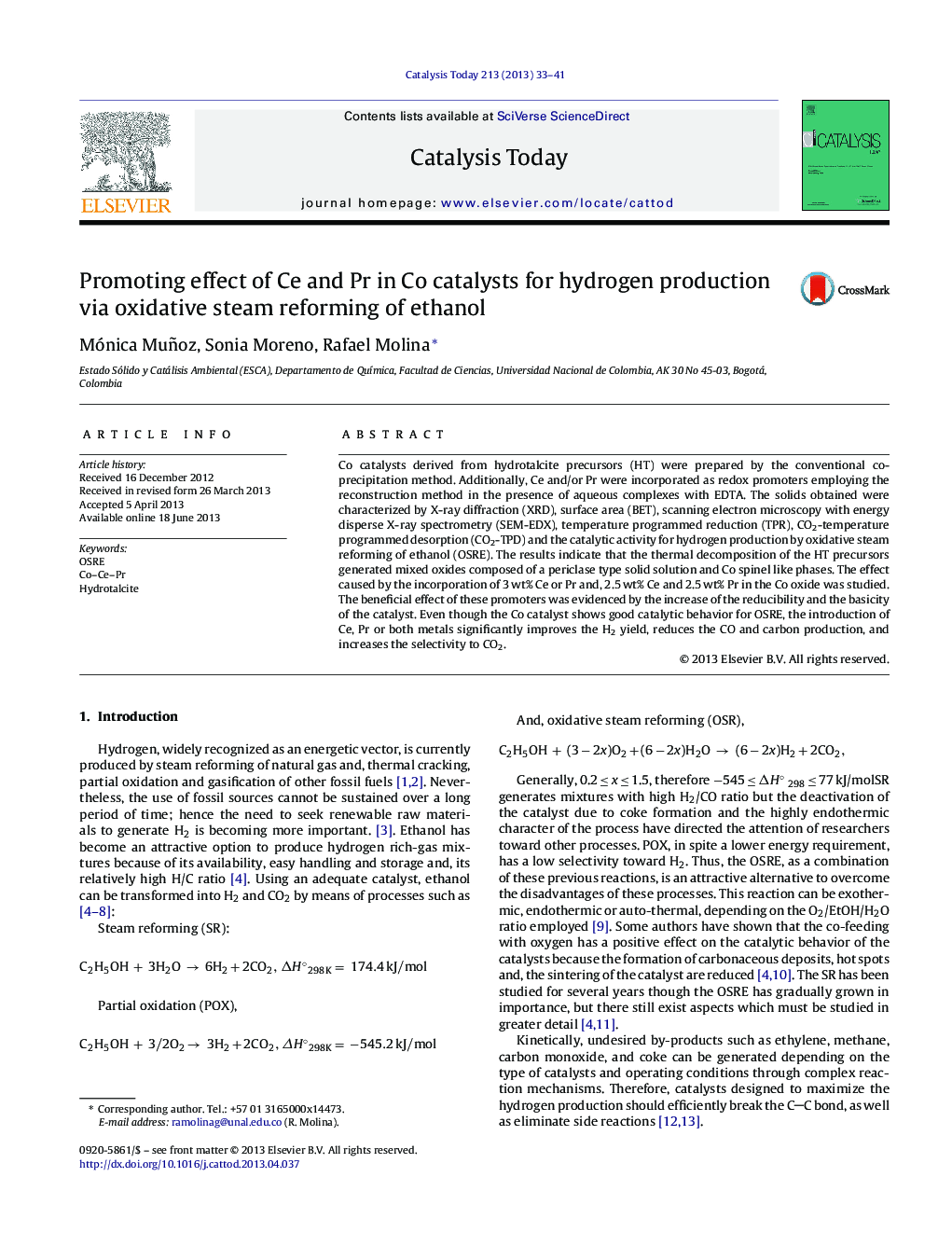| کد مقاله | کد نشریه | سال انتشار | مقاله انگلیسی | نسخه تمام متن |
|---|---|---|---|---|
| 54771 | 47026 | 2013 | 9 صفحه PDF | دانلود رایگان |

• Co, Ce–Co, Pr–Co and Ce–Pr–Co catalysts for hydrogen production via OSRE.
• The reducibility and basicity of OMCo catalyst was promoted by Ce and/or Pr.
• Excellent catalytic behavior of OMCo2.5Ce–2.5Pr catalysts for H2 production.
• Evidences of a cooperative effects between Pr–Co and Ce–Pr–Co metals.
Co catalysts derived from hydrotalcite precursors (HT) were prepared by the conventional co-precipitation method. Additionally, Ce and/or Pr were incorporated as redox promoters employing the reconstruction method in the presence of aqueous complexes with EDTA. The solids obtained were characterized by X-ray diffraction (XRD), surface area (BET), scanning electron microscopy with energy disperse X-ray spectrometry (SEM-EDX), temperature programmed reduction (TPR), CO2-temperature programmed desorption (CO2-TPD) and the catalytic activity for hydrogen production by oxidative steam reforming of ethanol (OSRE). The results indicate that the thermal decomposition of the HT precursors generated mixed oxides composed of a periclase type solid solution and Co spinel like phases. The effect caused by the incorporation of 3 wt% Ce or Pr and, 2.5 wt% Ce and 2.5 wt% Pr in the Co oxide was studied. The beneficial effect of these promoters was evidenced by the increase of the reducibility and the basicity of the catalyst. Even though the Co catalyst shows good catalytic behavior for OSRE, the introduction of Ce, Pr or both metals significantly improves the H2 yield, reduces the CO and carbon production, and increases the selectivity to CO2.
Figure optionsDownload high-quality image (152 K)Download as PowerPoint slide
Journal: Catalysis Today - Volume 213, 15 September 2013, Pages 33–41